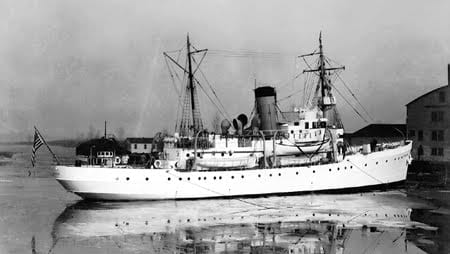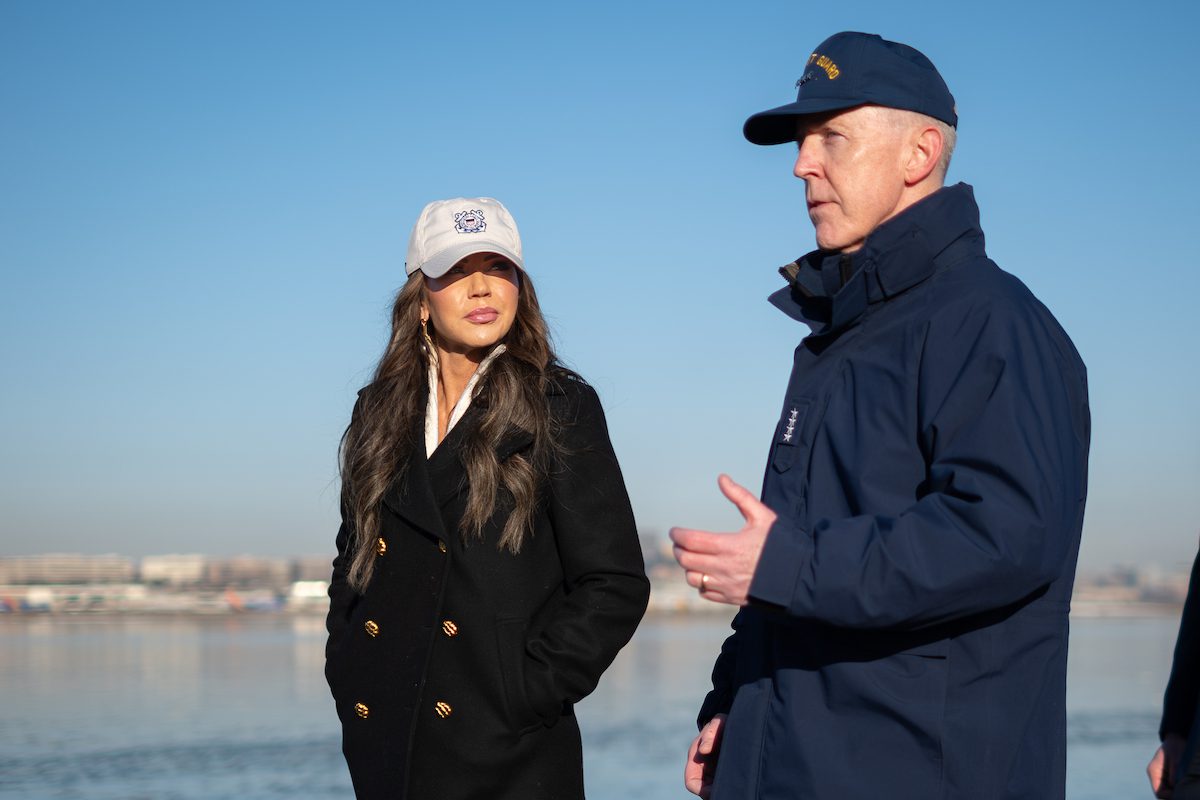 by 1/c Heather Johanson
by 1/c Heather Johanson
For many, June 13th is a day just like any other. However, for the crew of the USCGC ESCANABA(WMEC 907) and the citizens of Grand Haven, Michigan, it is a day of somber remembrance. The that we know and love today is not the first Coast Guard Cutter to bear the name. In fact, this is the third ESCANABA that the United States Coast Guard has seen. The first USCGC ESCANABA (WPG 77) sank sixty-seven years ago on June 13th, while performing escort duty of an Allied convoy in the North Atlantic Ocean. 101 men lost their lives that fateful night.
WPG 77 was built at the Defoe Shipyard in 1932 and made her maiden voyage to her homeport in Grand Haven, Michigan on December 9th, 1932 during a Lake Michigan blizzard. She was 165 ft long and 36 ft wide with a draft of 13ft. She was designed for light icebreaking, law enforcement, and rescue work on the Great Lakes. The cutter was an integral part of the city and was endearingly called the “Eskie” by those who knew of her. From protecting its citizens on Lake Michigan to breaking ice to promote commerce, the “Eskie” helped keep Grand Haven running. WPG 77 broke countless vessels free of ice and saved hundreds more. One of its greatest missions on Lake Michigan was in 1934 when the cutter delivered much needed food supplies to the residents of Beaver Island, who had been without supplies for months during an exceptionally rough winter.
At the outbreak of World War II, the USCGC ESCANABA(WPG 77) answered the call to serve her country in a time of war. The Navy adapted the cutter with additional armament and crew to combat potential submarine attacks while in the line of duty. Once outfitted, WPG 77’s homeport was moved to Boston, Massachusetts. The cutter was then tasked as an ice breaker and an escort to merchant convoys in the North Atlantic. The cutter endured rough seas and frigid weather, having to chip, chop and steam ice off to maintain stability. The cutter also had to keep a sharp lookout for submarines, which could quickly sink a merchant vessel.
During its time in the North Atlantic the ESCANABA performed several rescues saving over 170 people. Its biggest rescue was in February of 1943 when the ESCANABA saved 145 people from the torpedoed Army transport Dorchester. During this rescue the Commanding Officer of ESCANABA, LCDR Carl Peterson, made the first use of rescue swimmers. LT Robert Prause, ENS Richard Arrighi, Seaman Forest Rednour, and Steward Warren Deyempert went into the water wearing rubber suits to pull survivors from the freezing waters. Many of the men were too weak to pull themselves up the cargo nets to safety, 50 of the men in the water were suspected dead. However, the swimmers utilized lines to hoist the bodies aboard the ESCANABA. Once aboard the warm ship, 38 of the 50 men were revived and found to be severely hypothermic, but alive. If it were not for the courageous efforts of the ESCANABA and her swimmers these men would have perished in the icy waters. The cutter placed lines in the water to aid the swimmers and Steward Deyempert spent hours dangerously close to the propellers in freezing waters to keep the manropes from getting entangled in the props. The swimmers, as well as LCDR Peterson and Doctor Nix received medals for heroism. Unfortunately, this would be the cutters last rescue.
The above is a excerpt of a full article originally posted at USCGCEscanaba.blogspot.com and is posted here in a collaborative effort by a number of maritime bloggers to remember USCGC ESCANABA’s rich tradition, history and the lives lost when the vessel sank on June 13, 1943. More information on the USCGC ESCANABA (WMEC 907) can be found HERE.

 Join The Club
Join The Club



 by 1/c Heather Johanson
by 1/c Heather Johanson






